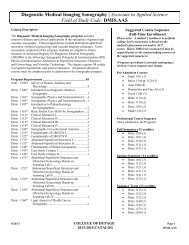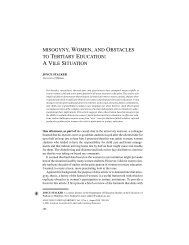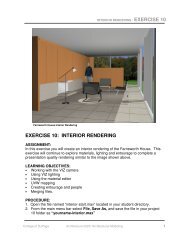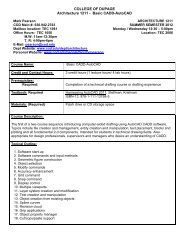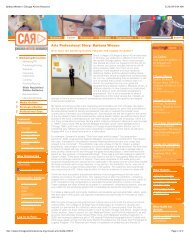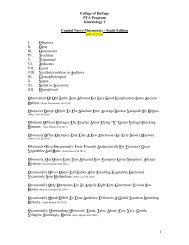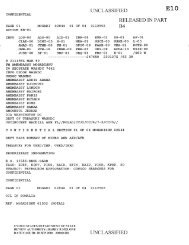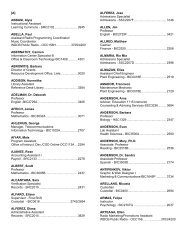pre-lab preparation sheet for lab 4—batteries, bulbs, and current
pre-lab preparation sheet for lab 4—batteries, bulbs, and current
pre-lab preparation sheet for lab 4—batteries, bulbs, and current
You also want an ePaper? Increase the reach of your titles
YUMPU automatically turns print PDFs into web optimized ePapers that Google loves.
The purpose of the first activity is to compare carriers of the <strong>current</strong> produced by a battery<br />
to the static charges deposited by rubbing materials together. You will observe a<br />
demonstration using the following materials:<br />
• 2 metal angle irons (approx. 15 cm long)<br />
• foil-covered Styrofoam ball on a string (2.5 cm diameter)<br />
• 300-V battery pack or power supply<br />
• hard rubber (plastic or Teflon © ) rod <strong>and</strong> fur<br />
• glass or acrylic rod <strong>and</strong> polyester, felt or silk cloth<br />
• electroscope<br />
• alligator clip leads<br />
• Wimshurst or Van de Graaff generator (optional)<br />
1 Faraday, M. ―Identity of Electrocutes Derived from Different Sources,‖ in Experimental Researches in<br />
Electricity, Vol. I, Taylor <strong>and</strong> Francis, London. (Reprinted by Dover Publications, New York, 1965, p. 76).<br />
Activity 1-1: Comparing Stuff from a Battery to the Rubbing<br />
Stuff<br />
1. The angle irons, ball, <strong>and</strong> electroscope will be set up as shown in Figure 4-2.<br />
Figure 4-2: Apparatus <strong>for</strong> detecting charge.<br />
2. The metal angle irons will be charged in two or more of the following ways:<br />
a. Electrostatic Charging by Rubbing. Stroke one plate with a rubber rod that has been<br />
rubbed with the fur. Repeat this several times. Stroke the other plate with the glass<br />
rod that has been rubbed with the polyester cloth.<br />
b. Charging with a Battery. Connect a wire from the negative terminal of the power<br />
supply to one of the angle irons. At the same time connect a wire from the positive<br />
terminal to the other plate.<br />
Lab 04 – Batteries <strong>and</strong> Current



